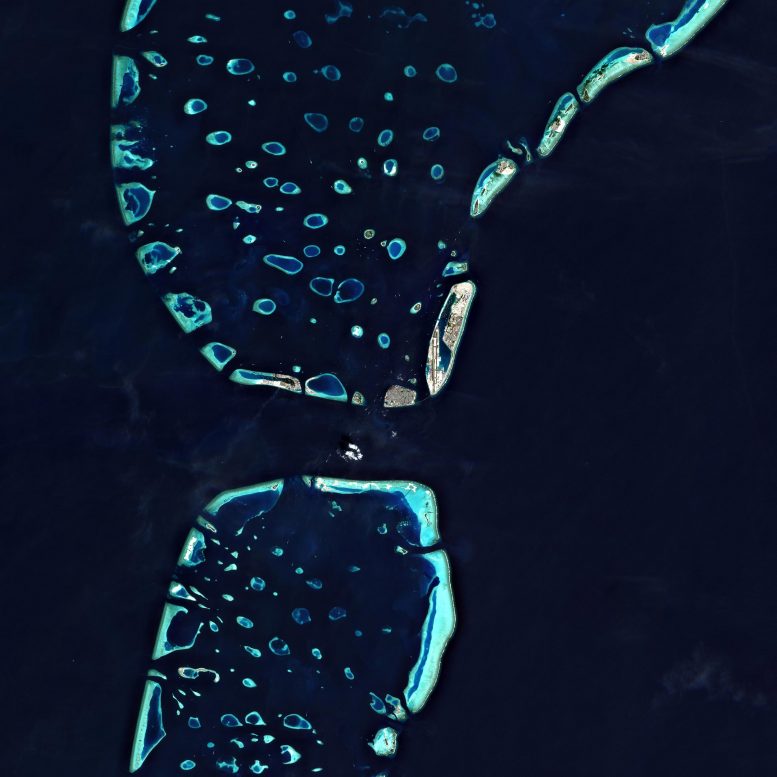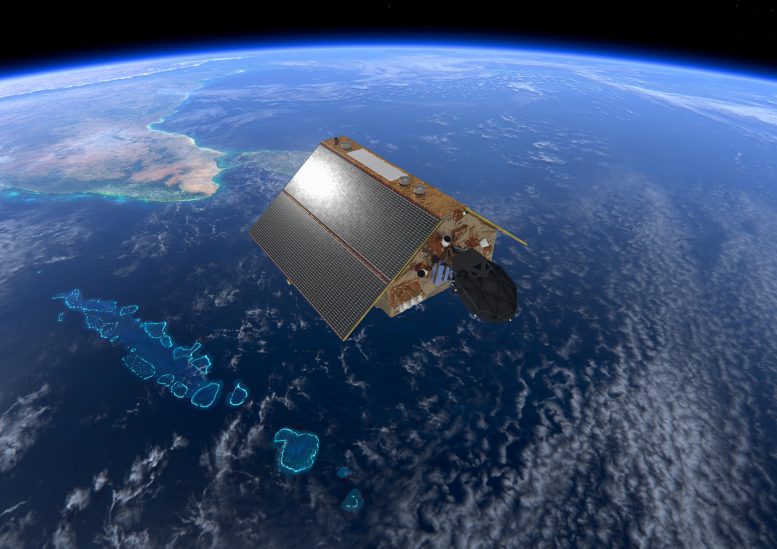
Image of Malé, the Maldives captured by Credit: Contains modified Copernicus Sentinel data (2019), processed by ESA, CC BY-SA 3.0 IGO
The Copernicus Sentinel-2 mission takes us over Malé – the capital and most populous city in the Republic of Maldives.
The Republic of Maldives consists of a chain of around 1200 small coral islands that are grouped into clusters of atolls – scattered across 90,000 sq km (35,000 sq mi) of ocean. A number of these little islands can be seen in the image, with the turquoise colors depicting clear, shallow waters dotted by coral reefs which contrasts with the dark colors of the Indian Ocean.
Malé, located at the southern edge of the North Malé Atoll, can be easily spotted in the right of the image. The island is small enough to walk around in approximately one hour, with most sights concentrated on its northern shore. Malé is both a trade and tourist center, connected with Sri Lanka and India by steamship lines, with several vessels visible in the image.
With a population of more than 200,000 and an area of around eight sq km (3 sq mi), Malé is one of the most densely populated cities in the world with the city covering almost the entire island.
With more than 80% of the Maldives’ land standing less than one meter above average sea level, the Maldives has the lowest terrain of any country in the world. This makes the archipelago particularly vulnerable to sea-level rise.
In response to this rising threat, the Maldives is working on enhancing the resilience of the country’s islands, which includes constructing the artificial island of Hulhumalé – visible northeast of the airport island of Hulhulé.
The island has been constructed by pumping sand from the seafloor onto a submerged coral platform, that rises around 2 m (6.6 ft) above sea level. The reclaimed land provides some much-needed space, and will also help meet the industrial and commercial development of the Malé region.
Satellite data have shown that the global ocean has risen, on average, 3 mm a year over the last 25 years. Warming ocean waters, melting glaciers and diminishing ice sheets are making rising sea levels a real threat to low-lying islands such as the Maldives.
Following liftoff in November 2020, the Copernicus Sentinel-6 Michael Freilich satellite, the most advanced mission dedicated to measuring sea-level rise, is now fully operational – meaning that its data are available to climate researchers, ocean-weather forecasts and other data users.










Be the first to comment on "Exploring Earth From Space: Malé, the Maldives – One of the Most Densely Populated Cities in the World"